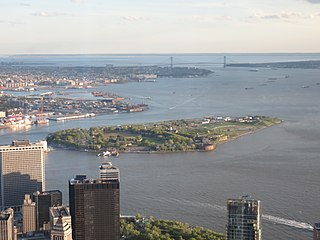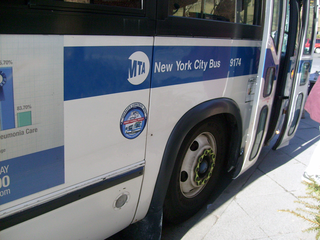Related Research Articles
The United States Armed Forces are the military forces of the United States. The armed forces consists of six service branches: the Army, Marine Corps, Navy, Air Force, Space Force, and Coast Guard. The president of the United States is the commander-in-chief of the armed forces and forms military policy with the Department of Defense (DoD) and Department of Homeland Security (DHS), both federal executive departments, acting as the principal organs by which military policy is carried out. All six armed services are among the eight uniformed services of the United States.

The United States Coast Guard (USCG) is the maritime security, search and rescue, and law enforcement service branch of the United States Armed Forces and one of the country's eight uniformed services. The service is a maritime, military, multi-mission service unique among the United States military branches for having a maritime law enforcement mission with jurisdiction in both domestic and international waters and a federal regulatory agency mission as part of its duties. It is the largest and most powerful coast guard in the world, rivaling the capabilities and size of most navies.

Floyd Bennett Field is an airfield in the Marine Park neighborhood of southeast Brooklyn in New York City, along the shore of Jamaica Bay. The airport originally hosted commercial and general aviation traffic before being used as a naval air station. Bennett Field is currently part of the Gateway National Recreation Area's Jamaica Bay Unit, and is managed by the National Park Service (NPS). While no longer used as an operational commercial, military, or general aviation airfield, a section is still used as a helicopter base by the New York City Police Department (NYPD), and one runway is reserved for hobbyists flying radio-controlled aircraft.

Governors Island is a 172-acre (70 ha) island in New York Harbor, within the New York City borough of Manhattan. It is located approximately 800 yards (732 m) south of Manhattan Island, and is separated from Brooklyn to the east by the 400-yard-wide (370 m) Buttermilk Channel. The National Park Service administers a small portion of the north end of the island as the Governors Island National Monument, including two former military fortifications named Fort Jay and Castle Williams. The Trust for Governors Island operates the remaining 150 acres (61 ha), including 52 historic buildings, as a public park. About 103 acres (42 ha) of the land area is fill, added in the early 1900s to the south of the original island.

Manhattan Beach is a residential neighborhood in the New York City borough of Brooklyn. It is bounded by the Atlantic Ocean to the south and east, by Sheepshead Bay on the north, and Brighton Beach to the west. Traditionally known as an Italian and Ashkenazi Jewish neighborhood, it is also home to a sizable community of Sephardi Jews and a large Russian Jewish immigrant presence.

Kingsborough Community College (KBCC) is a public community college in Brooklyn, New York. It is part of the City University of New York (CUNY) system and the only community college in Brooklyn.

The United States Coast Guard (USCG) Women's Reserve, known as the SPARS which was an acronym for "Semper Paratus—Always Ready", was the World War II women's branch of the USCG Reserve. It was established by the United States Congress and signed into law by President Franklin D. Roosevelt on 23 November 1942. This authorized the acceptance of women into the reserve as commissioned officers and at the enlisted level, for the duration of the war plus six months. Its purpose was to release officers and men for sea duty and to replace them with women at shore stations. Dorothy C. Stratton was appointed director of the SPARS, with the rank of lieutenant commander and later promoted to captain. She had been the Dean of Women on leave from Purdue University, and an officer in the WAVES. Stratton is credited with creating the nautical name of SPARS.

Ramey Air Force Base is a former United States Air Force base in Aguadilla, Puerto Rico. It was named after United States Army Air Forces Brigadier General Howard Knox Ramey. Following its closure, it was redeveloped into Rafael Hernandez Airport.

MTA Regional Bus Operations operates local and express buses serving New York City in the United States out of 29 bus depots. These depots are located in all five boroughs of the city, with the exception of one located in nearby Yonkers in Westchester County. 21 of these depots serve MTA New York City Transit (NYCT)'s bus operations, while the remaining eight serve the MTA Bus Company These facilities perform regular maintenance, cleaning, and painting of buses, as well as collection of revenue from bus fareboxes. Several of these depots were once car barns for streetcars, while others were built much later and have only served buses. Employees of the depots are represented by local divisions of the Transport Workers Union of America (TWU), particularly the TWU Local 100 and 101, or of the Amalgamated Transit Union (ATU)'s Local's 726 for all depots in Staten Island, 1056 for Casey Stengel, Jamaica, and Queens Village Depots, and 1179 for JFK & Far Rockaway Depots.
The United States Maritime Service Training Station at Sheepshead Bay was opened on September 1, 1942. It closed on February 28, 1954.

Training Center Petaluma is a Coast Guard training facility in the northern California counties of Sonoma and Marin. Approximately 4,000 students train there each year. It was formerly the U.S. Army Two Rock Ranch Station.

USS Hunter Liggett (APA-14) was built as an Emergency Fleet Corporation (EFC) Design 1029 ship, launched as Palmetto State and shortly after renamed Pan America for operation as the United States Shipping Board (USSB) owned liner operated by the Munson Steamship Line on New York to South American service. The ship was acquired by the War Department in February 1939 and renamed Hunter Liggett for operation as the United States Army transport USAT Hunter Liggett mainly between New York and San Francisco.

The Charleston metropolitan area is an urban area centered around Charleston, South Carolina. The U.S. Office of Management and Budget designates the area as the Charleston–North Charleston, SC Metropolitan Statistical Area, a metropolitan statistical area used for statistical purposes only by the United States Census Bureau and other federal agencies. The OMB defines the area as comprising Berkeley, Charleston and Dorchester counties, an area with 799,636 residents in the 2020 census. Principal cities include Charleston, North Charleston, and Summerville. The area is commonly referred to as the Tri-County Area or the Lowcountry, though the latter term has historically referred to South Carolina's southern coast in general.

The United States Coast Guard Police (CGPD) are law enforcement units stationed at certain shore facilities of the United States Coast Guard.
Shore Boulevard Mall is a waterfront promenade extending for nearly a mile along the southern bank of Sheepshead Bay in the Manhattan Beach neighborhood of Brooklyn, New York.

Baylander (IX-514), ex-YFU-79, was a United States Navy Helicopter Landing Trainer (HLT), billed as the world's smallest aircraft carrier. It served as a practice landing site for helicopter pilots in the United States Navy, Army, Air Force, Marine Corps, Coast Guard, and National Guard.

Crash boats, at the time known as "aircraft rescue boat" or "air-sea rescue boat" were wooden speedboats built to rescue the crew of downed United States and other Allies aircraft during World War II. US boats came from observation of British experience with High-speed launches during the Battle of Britain.
References
- ↑ "Manhattan Beach Army Housing Units Brooklyn, New York" (PDF). Environmental Research Division Argonne National Laboratory. November 1989. Archived (PDF) from the original on April 11, 2015. Retrieved 5 April 2015.
Coordinates: 40°34′38.48″N73°56′4.15″W / 40.5773556°N 73.9344861°W